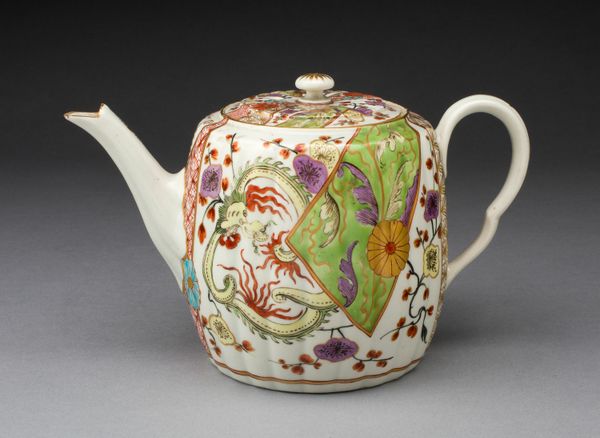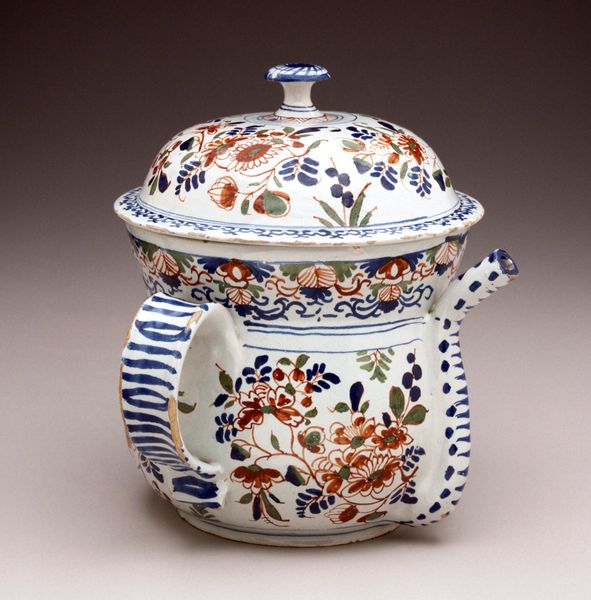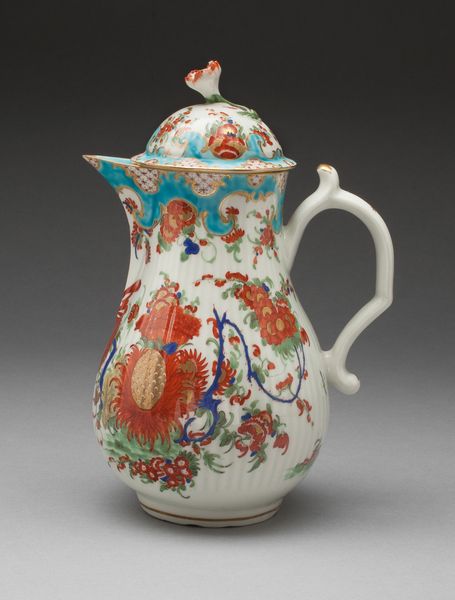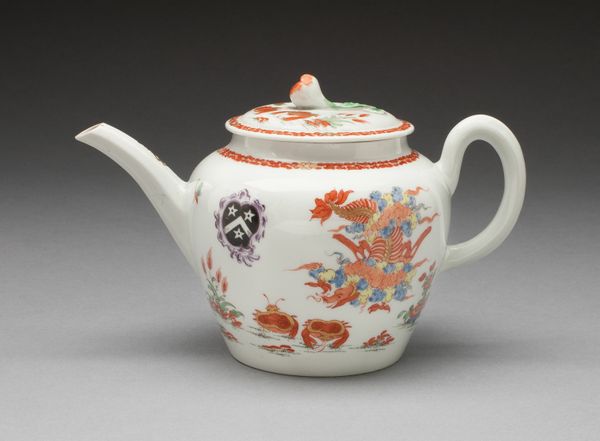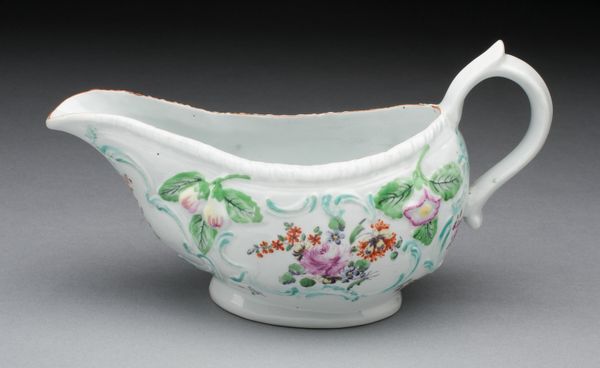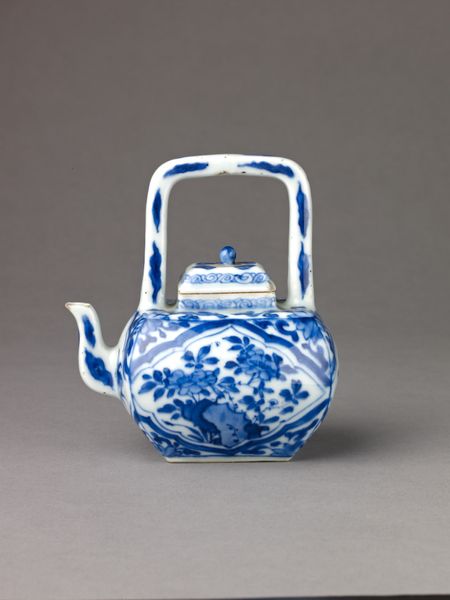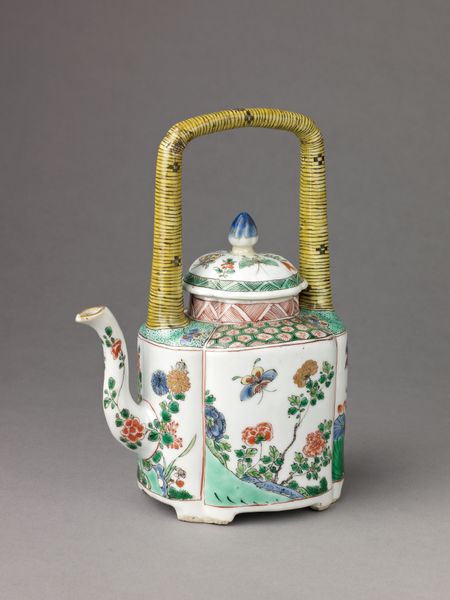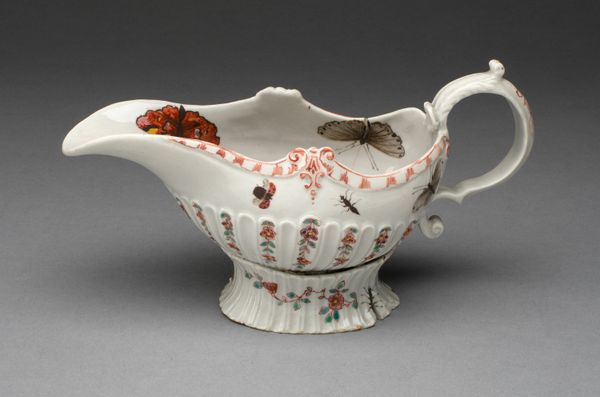
ceramic
#
ceramic
#
decorative-art
Dimensions: 11.1 × 10.8 cm (4 3/8 × 4 1/4 in.)
Copyright: Public Domain
Editor: Right in front of us we have a Teapot, from around 1760, crafted by the Staffordshire Potteries. It's made of ceramic. Gosh, what catches my eye is just how cheerful and whimsical it feels – like a burst of spring. I wonder, what strikes you most about this piece? Curator: Whimsical is absolutely the word! For me, it’s the conversation between the wild profusion of color and the disciplined form. See how the handle and spout are almost like branches, reaching out? They suggest a wildness contained – almost like taming a little piece of nature itself. What does 'tea' bring to your mind? For me, it is like meditation - just the vessel's look makes you happy. Editor: I hadn’t noticed the branches before! I was so caught up in the riot of colours. Is this the influence of Rococo? I keep picturing Marie Antoinette drinking tea out of something like this. Curator: Absolutely Rococo! But think a bit beyond pure courtly excess, because this piece was made for a market hungry for these new vibrant colours, keen for beautiful objects to bring colour into daily life. Staffordshire was a hotbed of experimentation; imagine these potters, pushing the boundaries, firing after firing, figuring out how to get those dazzling shades just right. The green feels quite vibrant in my eyes. Doesn’t it make you just want to see a garden? Editor: That's such a good point – democratizing beauty. It's not just for royalty; it’s for anyone who wants to bring a little joy into their afternoon tea! I'll never look at a teapot the same way again. Thanks so much. Curator: And I realize this wasn't just about artistry - the global appetite for tea spurred innovation and creative problem solving, didn't it? A good brew to you!
Comments
No comments
Be the first to comment and join the conversation on the ultimate creative platform.
